What Is Dandelion Good For?
Dandelion (Taraxacum mongolicum Hand.-Mazz.), also known as yellow dandelion, mother-in-law's cap, aunt Ying, etc., is a perennial herb in the family Asteraceae. Dandelion is highly adaptable and is distributed nationwide[1, 2]. The whole plant is edible, and there are records of it being eaten fresh in many parts of the country as a common edible wild vegetable. At the same time, as a traditional Chinese medicinal herb, dandelion is cold in nature, bitter and sweet in taste, and has the effects of clearing away heat and toxins, reducing swelling and dispersing lumps, and inducing diuresis and treating strangury [3].
In 2012, the National Health Commission included dandelion in the list of foods with medicinal properties[4]. Modern research has shown that dandelion is rich in nutrients and active ingredients, especially a large amount of cellulose, inulin, flavonoids and terpenoids. These active ingredients give it various pharmacological values such as antibacterial, anti-inflammatory, antioxidant and anti-tumor properties[5-7]. In recent years, with the pursuit of a high quality of life and the continuous improvement of health awareness, dandelion has attracted much attention in product research and development in the medical and food fields. A comprehensive study of the nutritional functional properties of dandelion and the current state of product development aims to provide new ideas for the research of dandelion's nutritional functional properties and the development and application of its deep processing products.
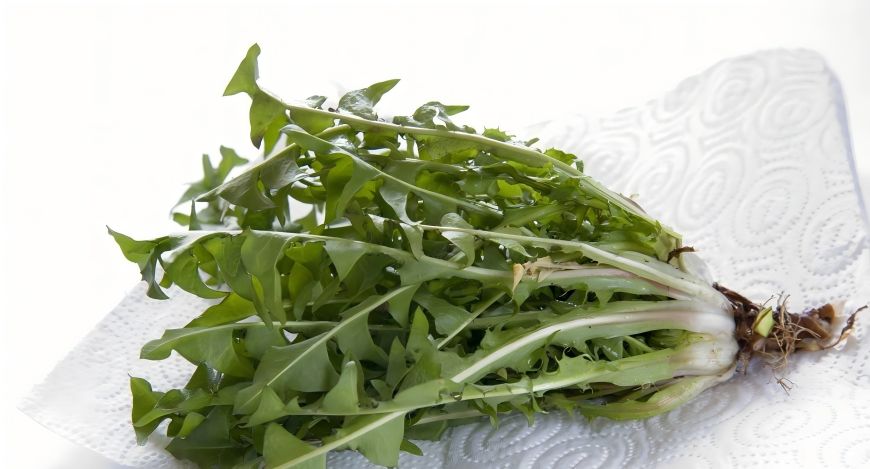
1 Nutritional functional properties of dandelion
1.1 Nutritional substances and active ingredients in dandelion
1.1.1 Nutrients
Dandelions are rich in a variety of nutrients such as protein, fat, carbohydrates, vitamins, amino acids and minerals (such as calcium, iron and selenium). Dandelions contain dozens of times more dietary fiber and protein than ordinary vegetables[8]. Studies have shown that it is rich in crude fiber, which has a good effect on the regulation of the human gastrointestinal tract, and also has the effect of lowering blood sugar[9]. Selenium is a trace element that is essential for the body and is involved in antioxidant processes. Dandelion contains 14.7 μg of selenium per 100 g of dried product, which is higher than that of many common vegetables [8].
1.1.2 Active ingredients
The nutritional value and medicinal properties of dandelion are inseparable from its active ingredients. Dandelion contains various compounds such as polysaccharides, phenolic acids, flavonoids and terpenes [10].
1.1.2.1 Polysaccharides
The polysaccharides in dandelion include glucose, fructose, sucrose, inulin and polyoses. Dandelion roots contain a large amount of polysaccharides, and 90% of the polysaccharides in the roots are inulin [11]. Inulin has a variety of effects, such as lowering blood sugar, regulating blood lipids, and inhibiting obesity. It also has the effect of promoting the growth of probiotics in the gastrointestinal tract and eliminating pathogens [12].
1.1.2.2 Phenolic acids
Dandelion is rich in phenolic compounds, including chlorogenic acid, caffeic acid, and chicoric acid [11]. Modern research has shown that caffeic acid and chlorogenic acid are the two compounds that make up the highest proportion of dandelion phenolic compounds and are the main antibacterial components. In addition, derivatives of caffeic acid, such as chicoric acid and mono-caffeoyl-l-tartaric acid, have unique effects such as lowering blood lipids and blood sugar [13].
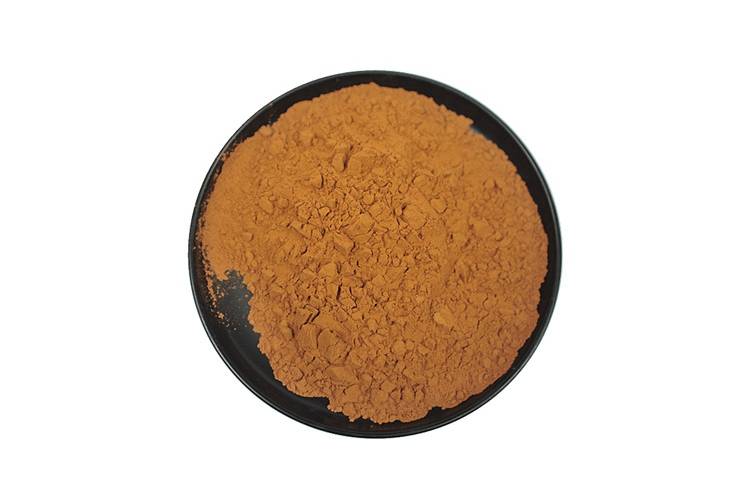
1.1.2.3 Terpenoids
Terpenoids are a class of natural products widely distributed in nature. They are classified according to the number of isoprene units in their molecular composition into monoterpenes, sesquiterpenes, diterpenes, triterpenes, tetraterpenes and polyterpenes. Dandelions mainly contain sesquiterpenes and triterpenes. The bitter and sweet taste of dandelion is mainly caused by sesquiterpenoids, including taraxerol, mongolicin B and isodiospyrin A [14]. In addition, the triterpenoids include dandelion sterols, dandelion sterol ethyl ester, dandelion caryophyllene, etc. [15].
1.1.2.4 Flavonoids
Most flavonoids are colored, and they are one of the main active ingredients in medicinal plants. They are also a common secondary metabolite in Asteraceae plants. More than 40 flavonoids have been identified in dandelions, which have a variety of biological activities and are relatively low in toxicity. The flavonoids in dandelions have a variety of effects, including anti-tumor and anti-oxidation [16].
1.2 Functional properties of dandelions
The different nutrients and active ingredients in dandelion enable it to exert corresponding functional properties, giving it multiple effects such as antibacterial, anti-inflammatory, antioxidant and anti-tumor properties.
1.2.1 Antibacterial
Dandelion has a broad-spectrum antibacterial effect. Its extract has a certain inhibitory effect on Staphylococcus aureus, gram-positive cocci, Proteus mirabilis, Bacillus subtilis, Escherichia coli, Streptococcus faecalis, Streptococcus faecium, and gram-negative cocci [17, 18]. After the isolation and testing of its active substance components, it was found that the bacteriostatic components of dandelion mainly include flavonoids, fat-soluble components, organic acids, etc. [19, 20].
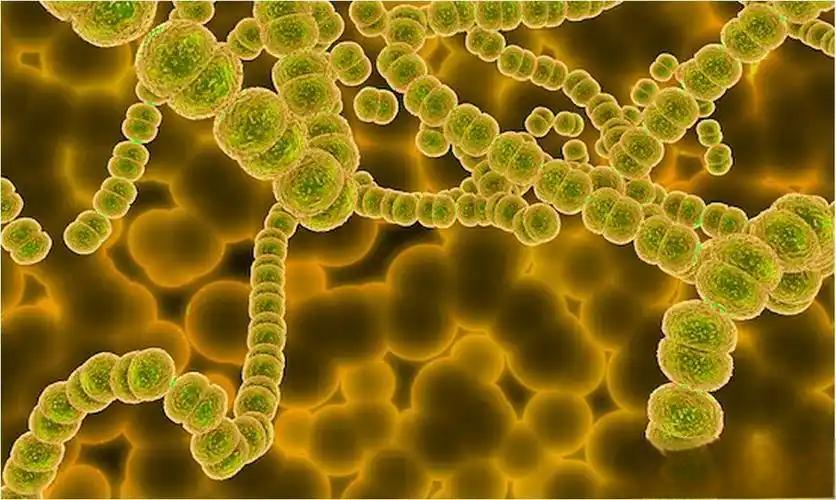
1.2.2 Anti-inflammatory properties
Inflammation is a normal physiological response of the body to injury, infection or other stimuli, which aims to remove pathogens, repair tissues and protect the body from harm. However, when the inflammatory response is uncontrolled, overactivated or prolonged, it may be associated with the occurrence and development of various diseases. Current research has fully confirmed that dandelion has significant anti-inflammatory activity in the body. Park et al. [21] found that dandelion polysaccharides inhibit inflammatory responses by inactivating related signal transduction pathways. Dong et al. [22] confirmed the anti-inflammatory effect of dandelion sterols in mouse experiments.
1.2.3 Antioxidant
Oxidative stress is a process of cell and tissue damage caused by oxygen free radicals or other oxidants. By inhibiting or reducing the production and activity of oxygen free radicals, cells can be protected from oxidative stress damage, which helps maintain cell health, reduce the risk of chronic diseases, and promote overall health and longevity. The polysaccharides, flavonoids and phenolic substances in dandelion exhibit strong scavenging ability against free radicals and have a good antioxidant effect [23, 24].
On the other hand, the antioxidant properties of dandelion flavonoids also have a certain effect on the preservation of ingredients. Wang Xiaoying et al. [25] found that after cold fresh meat was coated with a dandelion total flavonoid extract preservative, the preservation period was extended by 8 days, and the preservation period was extended with the increase in the mass concentration of the dandelion total flavonoid extract.
1.2.4 Antitumor
Cancer has become a major disease threatening human life and health, and the development of safe and effective anti-tumor drugs is currently a key research focus in the field of medicine. Natural products have unique advantages in the development of anti-tumor drugs due to their abundant resources, diverse structures, and multiple targets. Dandelion is a traditional Chinese medicine variety. Studies have shown that it has significant anti-tumor effects and can effectively inhibit the proliferation of various cancer cells, such as breast cancer, liver cancer, colorectal cancer and gastric cancer cells [26-28].
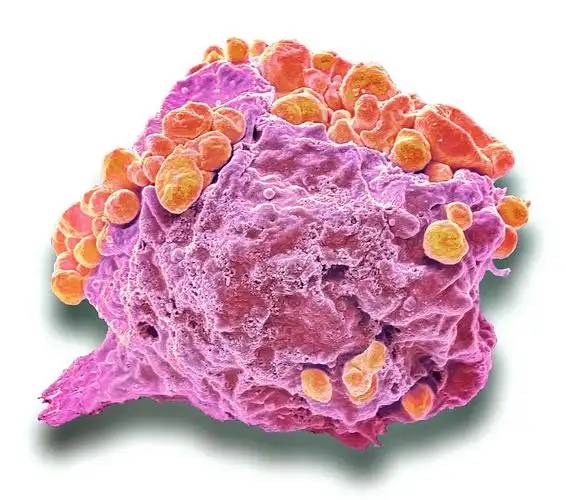
2 Dandelion product development status
Dandelion is widely distributed, has a large output and high nutritional value. As a medicinal food with similar properties to food, it has huge development prospects. Dandelion leaves have a long history of consumption in many regions. As people's knowledge of dandelion gradually deepens, dandelion is widely used in the form of additives to develop various grain products, including dandelion buns, dandelion bread, dandelion biscuits, dandelion tofu, etc., which on the one hand improves the nutrition of the food, and on the other hand improves the quality and flavor of the food. Dried whole dandelion herb is often used as a substitute for tea. The market is full of various dandelion drinks such as dandelion tea, dandelion functional drinks, dandelion yogurt, dandelion coffee, etc.
2.1 Dandelion drink products
Dandelion is easy to make into tea bags. After brewing, it has a slightly bitter taste with a sweet aftertaste. Dandelion contains a large amount of chlorogenic acid and dandelion polysaccharides. Long-term use can achieve the effect of clearing away heat and detoxifying, anti-oxidation, and improving intestinal health. Making dandelion into a drink not only improves the taste and flavor, but also increases the nutritional value. Existing dandelion drinks can be roughly divided into dandelion tea drinks, dandelion extract drinks, dandelion fermented drinks, and dandelion solid drinks.
2.1.1 Dandelion tea
Tea is a common drink with a long history in China. Dandelion tea comes in two varieties: dandelion leaf tea and dandelion root tea. Dandelion leaf tea is a roasted green tea made from the fresh young leaves of the dandelion using a specific processing method. This tea has a compact appearance, dark green color, strong aroma, and a characteristic taste that is bitter at first and then sweet [29]. Dandelion root tea is made according to traditional Chinese tea-making techniques, using high-quality, clean dandelion rhizomes that have been stir-fried. Dandelion tea can also be combined with green tea, chrysanthemum, etc., to make a mixed dandelion tea bag [30]. When dandelion is used as a tea, brewing can fully dissolve the water-soluble ingredients in the dandelion, which not only has the health benefits of clearing away heat and toxins, anti-inflammatory and liver-benefiting, but also has the unique fragrance of the dandelion itself[31].
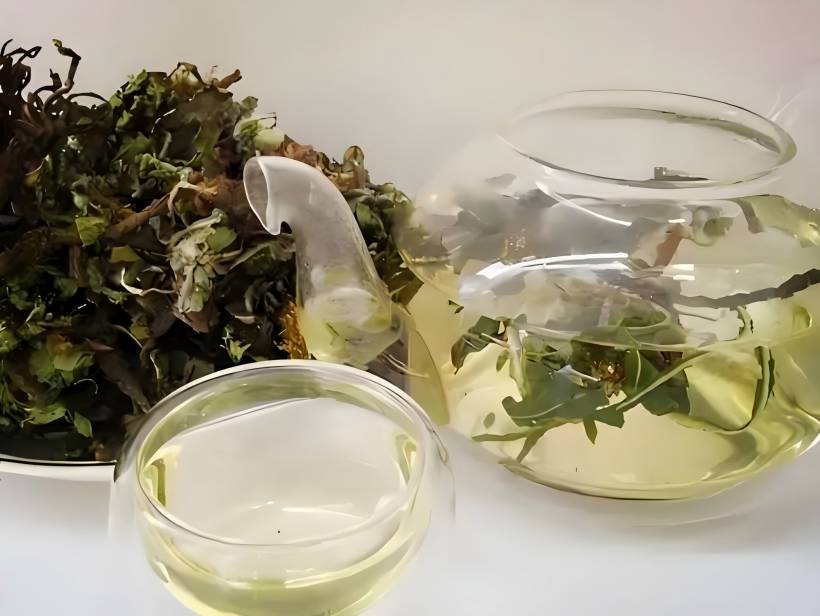
2.1.2 Dandelion extract beverage
Dandelion is rich in active ingredients that are beneficial to the human body. In order to facilitate transportation and consumption, dandelion raw materials can be extracted to produce functional drinks. Compound dandelion drinks are drinks produced by mixing different ingredients including dandelion. This type of drink has a rich and varied texture and taste, while also taking into account certain health functions. Yin Jiale et al. [32] determined the optimal formula for a ginseng-dandelion compound beverage: 60% dandelion extract, 20% ginseng extract, 11% xylitol, and 0.09% citric acid. This health-promoting compound beverage has a significant anti-fatigue effect and a unique taste.
2.1.3 Dandelion fermented beverages
Dandelion fermented drinks include dandelion probiotic drinks and dandelion vinegar, which are made by fermenting dandelion as the main additive. Fermentation of dandelion can improve the taste and flavor, enrich the nutritional value, and enhance the commercial value of dandelion. Kim et al. [33] fermented dandelion extract with lactic acid bacteria to produce a dandelion probiotic functional drink with antioxidant activity.
2.2 Dandelion food
The traditional edible part of dandelion is the young leaves, which are easily damaged and deteriorated during storage and transportation. Deep processing of the food is required after picking. Dandelion food products include grain products such as dandelion buns, dandelion noodles, and dandelion biscuits, as well as dandelion pickles and dandelion tofu. These dandelion food products not only increase the nutritional value of the original food, but also effectively solve the problem of inconvenient transportation and storage of dandelion raw materials.
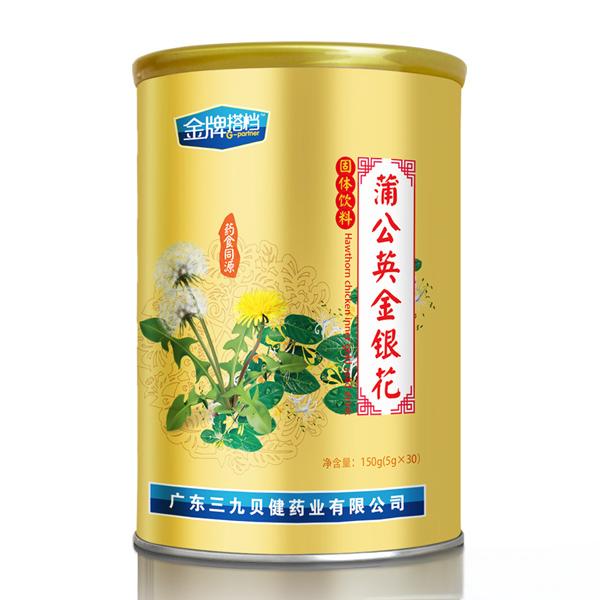
2.2.1 Dandelion grain products
Grain products are foods made from various grains as the main raw material, including rice, noodles, bread, etc. These foods provide carbohydrates and proteins, which are the main sources of energy for the human body. However, their nutritional composition is relatively monotonous, lacking certain essential vitamins (such as vitamin D and vitamin B12) and minerals (such as iron, zinc, and calcium), making it difficult to meet the nutritional needs of the body. Dandelion is rich in crude fiber. Adding dandelion powder or extract to grain products such as steamed buns, noodles, biscuits, and bread not only makes them suitable for all ages, but also gives them a unique taste and balanced nutrition [34-37].
2.2.2 Dandelion dairy products
Dandelion dairy products are pasteurized and fermented lactic acid milk drinks made from dandelion juice or extract and fresh milk. In a study by Zhao Jianying et al. [38], fresh dandelion juice was obtained using the juicing method, and then added to fresh milk to prepare yogurt. When 20 g of grapefruit juice, 8 g of dandelion, and 7 g of white sugar were added, the resulting dandelion-grapefruit yogurt had the best taste, with a fermented milk fragrance and a dandelion fragrance.
2.2.3 Other foods
Dandelion can be used in food products other than grain products and dairy products, such as pickles and tofu. Dandelion pickles are made by pickling with low salt content, then desalting and stir-frying with ginger, monosodium glutamate and other condiments. Chi Xiaojun et al. [40] used dandelion, soybeans, and black beans as raw materials, and used their self-developed electric stone mill to make dandelion tofu. The tofu is soft and tender, the soup is white, and the taste is fresh and the texture is delicate.
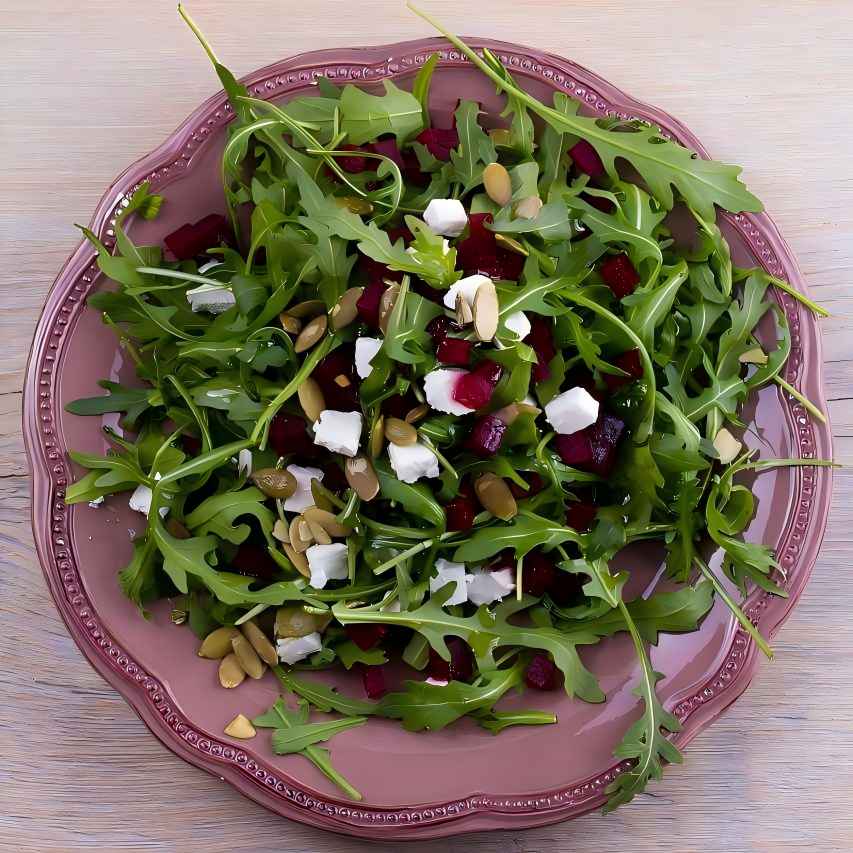
2.3 Dandelion daily chemical products
Based on the unique nutritional value and medicinal effects of dandelion, a variety of daily chemical products have been developed, including toothpaste, facial cleanser, essential oils, etc., but most of them are currently in the experimental stage, and there are no related products with high market value. He Shujiang [41] proposed the idea of using dandelion and gypsum to develop a fire-clearing toothpaste. Dandelion essential oil mixed with other essential oils can be used to make dandelion essence, which has the effect of clearing away heat and relieving itching, refreshing the mind and invigorating the brain, and has a long-lasting and unique fragrance [42]. In addition, a dandelion facial cleanser developed by Steve et al. [43] that contains a complex of amino acids can capture free radicals produced on the surface of the skin and is excellent at delaying skin aging.
3 Prospects
Dandelion is highly adaptable, widely distributed, produces large quantities, has high nutritional value, and has broad prospects for development and utilization as a food with medicinal properties. However, there is currently insufficient research on dandelion. Most studies on the nutritional functional properties and mechanism of action of dandelion remain at the level of animal experiments or cell experiments without further research. The development and application of food products is mostly processing for convenient transportation, and the high nutritional value of dandelion has not been explored. This paper comprehensively studies the nutritional functional characteristics and mechanism of action of dandelion in recent years, as well as the development status of food products. It provides a basis for further research on the nutritional composition and active ingredients of dandelion and deep processing of food, and aims to provide new ideas for research on the mechanism of action of dandelion's nutritional functional characteristics and the development and application of food products.
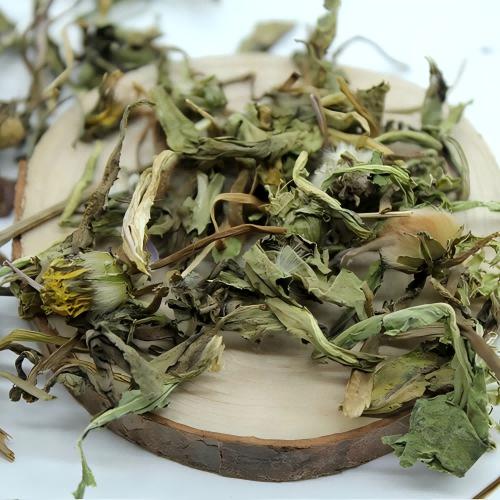
Looking to the future, dandelion can be studied from the following perspectives: First, as a food ingredient with medicinal and edible properties, dandelion needs continuous improvement of artificial cultivation techniques to improve its yield and quality, thereby laying a resource foundation for the development and utilization of dandelion; second, the nutritional functional characteristics and mechanism of action of dandelion have not yet been clearly studied, and multi-omics technology can be introduced for in-depth research based on animal experiments and in vitro experiments; third, combined with the nutritional mechanism research of dandelion, continuously develop the application of dandelion in health food, and at the same time do a good job in promoting dandelion products.
References
[1] Editorial Committee of the Flora of China, Chinese Academy of Sciences. Flora of China [M]. Beijing: Science Press. 1999.
[2] Qiao Yonggang, Wang Yongfei, Cao Yaping, et al. Cluster analysis of 13 species of Taraxacum with similar nuclear karyotype coefficients [J]. Journal of Grassland, 2020, 28(1): 285-290.
[3] National Pharmacopoeia Commission. Pharmacopoeia of the People's Republic of China (2020 Edition) - Part I [M]. Beijing: China Medical Science and Technology Press. 2020.
[4] Qiao Yongjin, Zhang Yi, Wu Songheng, et al. Processing technology of dandelion tea [J]. Shanghai Agricultural Science and Technology, 2023, (5): 24-25.
[5] Xu Xianmeng, Dong Wenbin, Lu Jun, et al. Research progress on the chemical composition and functional properties of dandelion [J]. Journal of Food Safety and Quality, 2018, 9(7): 1623-1627.
[6] Shi Aowen, Yao Jiajing, Wang Qing, et al. Research progress on the chemical composition and pharmacological effects of dandelion and its quality marker prediction analysis [J]. Chinese Journal of Traditional Chinese Medicine, 2023, 1-14.
[7] Nie Wenjia, Xu Shuai, Zhang Yongmei. Research progress on the active ingredients and pharmacological effects of dandelion [J]. Journal of Liaoning University of Traditional Chinese Medicine, 2020, 22(7): 140-145.
[8] Ma Xianhong, Li Xuan. Research progress of dandelion food [J]. Food Industry, 2023, 44(9): 156-160.
[9] Zhang Luying. The practical value and new product development of dandelion [J]. Food Safety Herald, 2017(12): 139-140.
[10] Xie Shenyang, Yang Xiaoyuan, Ding Zhanggui, et al. Chemical constituents and pharmacological effects of dandelion [J]. Natural Product Research and Development, 2012, 24 (S1): 141-151.
[11] Zou Shihui. Research progress on bioactive substances in dandelion [J]. Heilongjiang Agricultural Science, 2019 (8): 186-189.
[12] Rober Froid. Marcel B. Concepts in Functional Foods: The Case of Inulin and Oligofructose [J]. Journal of Nutrition, 1999, 129 (7): 1398S-1401S.
[13] Zhang Xiaodong, Sun Liya, Meng Ran, et al. Extraction and in vitro functional activity analysis of phenolic acid components in 22 dandelion resources [J]. Jiangsu Agricultural Science, 2021, 49(19): 190-196.
[14] Brockhof F A, Behren S M, Massarotti A, et al. Broad tuning of the human bitter taste receptor hTAS2R46 to various sesquiterpene lactones, clerodane and labdane diterpenoids, strychnine, and denatonium [J]. Journal of agricultural and food chemistry, 2007, 55 (15): 6236-6243.
[15] Chen Ruijun, Wang Qiuyuan, La Xiaojin, et al. Progress in the research of medicinal dandelion [J]. Modern Journal of Integrated Traditional and Western Medicine, 2021, 30 (5): 563-567.
[16] Zhang Lianghua, Yi Jianping. A review of the extraction and bioactivity of functional components of dandelion [J]. Food Safety Guide, 2019 (18): 155-156.
[17] Sun Jimei, Zheng Wei, Zhou Xiuzhen, et al. Study on the antibacterial activity of dandelion in vitro [J]. Chinese Journal of Misdiagnosis, 2009, 9 (11): 2542-2543.
[18] Ji Xiaoyu, Peng Yuanxia, Liu Min, et al. The effect of different extracts of dandelion on the antibacterial activity of Escherichia coli in vitro [J]. Journal of Guangzhou University of Traditional Chinese Medicine, 2015, 32(1): 116-120.
[19] Li Yunxiang, Liang Yinku, Gao Feixiong, et al. The antibacterial mechanism of dandelion fat-soluble components against Salmonella [J]. Food Industry Science and Technology, 2019, 40(4): 125-128.
[20] Hou Jingling, Zhou Xiaonan, Zhao Xinghua, et al. Extraction of several dandelion components and in vitro antibacterial effect test [J]. Chinese Journal of Veterinary Medicine, 2016, 52(12): 53-55.
[21] Park C, Shin J H, Min K H, et al. TOP 1 and 2, Taraxacum officinale polysaccharide, inhibit LPS-stimulated inflammatory mediators via the NF-κB and Akt inactivation in RAW 264.7 cells [J]. The FASEB Journal, 2011, 25(3): 595.
[22] Dong Changying, Wu Junbo. Extraction of dandelion sterols and study of their anti-inflammatory activity [J]. Heilongjiang Animal Husbandry and Veterinary Medicine, 2011 (5): 133-134.
[23] Sui Hongyu, Wang Yi, Luan Haiyan, et al. Antioxidant effect of dandelion total flavonoid extract on brain tissue of aging model mice [J]. Traditional Chinese Medicine, 2009, 31(8): 1289-1290.
[24] Wirngo F E, Lambert M N, Jeppesen P B. The Physiological Effects of Dandelion (Taraxacum Officinale) in Type 2 Diabetes [J]. The Review of Diabetic Studies, 2016, 13(2-3): 113-131.
[25] Wang Xiaoying, Liu Changjiao, Duan Lianhai, et al. Application of dandelion total flavonoid extract in the preservation of fresh pork coated with film [J]. Food Science, 2014, 35(6): 214-218.
[26] Yang Chao, Yan Qingzi, Tang Jie, et al. Analysis of the components of dandelion volatile oil and its anti-inflammatory and anti-tumor activity [J]. Chinese Journal of Traditional Chinese Medicine, 2018, 33 (7): 3106-3111.
[27] Guo Qinyu. Effects of dandelion on human gastric cancer BGC823 cells and mouse liver cancer H22 cells [D]. Lanzhou: Lanzhou University, 2015.
[28] Shen Jinghua, Yang Limin, Zhang Linna, et al. Study on the anti-tumor effect of five traditional Chinese medicine extracts [J]. Journal of Inner Mongolia Medical College, 2005 (4): 46-48.
[29] Fan Na, Wu Zhen, Wang Pan. Development of dandelion tea beverage [J]. Journal of Shangluo University, 2017, 31 (6): 60-63+72.
[30] Sun Ai, Liu Shanshan, Shen Lei, et al. Development of dandelion tea [J]. Food Research and Development, 2016, 37(13): 68-72.
[31] Li Fang, Xie Guangfan, Yang Fan. Research progress on the application of dandelion in food [J]. China Food Industry, 2022, 18): 84-87.
[32] Yin Jiale, Chen Yue, Zhang Haiyue. Development of a dandelion and ginseng compound health drink and its anti-fatigue function [J]. Food Science and Technology, 2020, 45 (11): 82-89.
[33] Kim J H, Baik S H. Preparation and characterization of fermented dandelion (Taraxacum officinale) beverage using Lactobacillus acidophilus F46 having cinnamoyl esterase activity [J]. Food Science & Biotechnology, 2015 (24): 583–593.
[34] Zhang Lingwen, Sun Kexiang, Ji Hongfang. Research on the production process of dandelion health bread [J]. Processing of Agricultural Products, 2009 (6): 71-74.
[35] Xu Xianmeng, Lu Jun, Dong Wenbin. Development of a kind of dandelion noodles [J]. Grain Processing, 2020, 45 (6): 24-27.
[36] Wang Yanping, Cao Fahao, Chen Haixia. Development and nutritional composition determination of dandelion nutritional bread [J]. Food Research and Development, 2013, 34 (15): 86-88.
[37] Ma Jingxi, Yin Xinsong, Wu Shuqing. Development of dandelion biscuits [J]. Food Research and Development, 2019, 40(4): 77-81.
[38] Zhao Jianying, Bai Jian. Optimization of dandelion and pomelo yogurt process using response surface methodology [J]. Food Research and Development, 2021, 42(18): 123-129.
[39] Liu Chenggang. The production process of dandelion pickles [J]. Grain Processing, 2022, 47(5): 52-54.
[40] Chi Xiaojun, Guo Yuqing, Liu Hui, et al. Process optimization and application research of dandelion tofu [J]. Food Research and Development, 2021, 42(2): 103-108.
[41] He Shujiang, Liu Keqin, Duan Dahan. Preliminary development of gypsum dandelion medicinal toothpaste [J]. Chinese Ethnic and Folk Medicine, 2009, 18(18): 26.
[42] Zhu Chuansheng. A dandelion essence: China 101988029[P]. 2011-03-23.
[43] Shi, Steve, Liu Jianghong, Han Meizi, et al. Preparation of a dandelion facial cleanser with a complex amino acid blend [J]. Shandong Chemical Industry, 2021, 50(6): 18-22.


 English
English French
French Spanish
Spanish Russian
Russian Korean
Korean Japanese
Japanese






